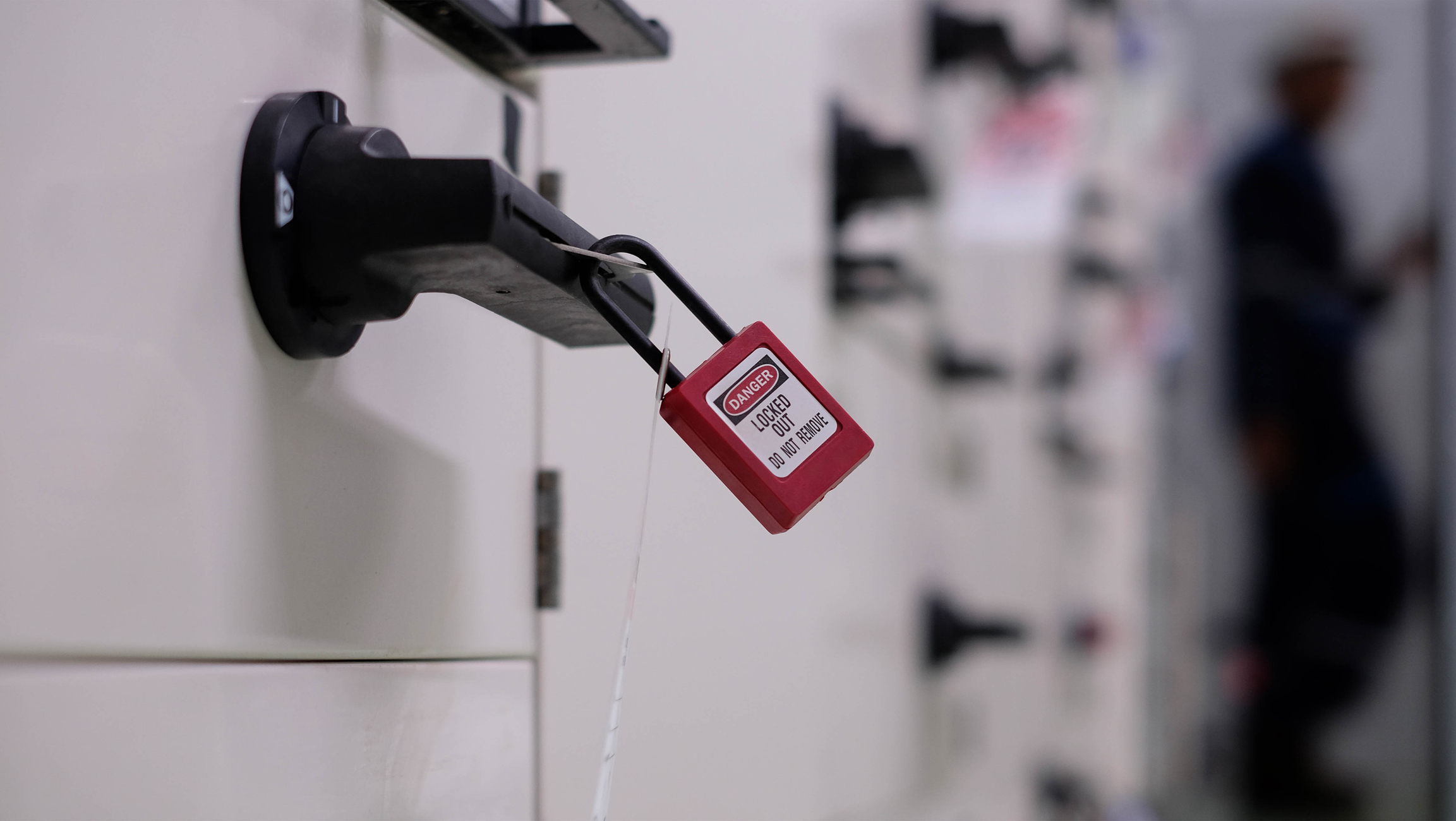
Lockout/Tagout – 8 Helpful Steps to Know
According to OSHA, lockout/tagout procedures are:
“specific practices and procedures designed to safeguard employees from the unexpected energization or startup of machinery and equipment, or the release of hazardous energy during service or maintenance activities.”
Proper Lockout/Tagout procedures and practices safeguard workers from hazardous energy releases and prevent hazards and injury on the job site.
Lockout/Tagout Procedures Are About Controlling Hazardous Energy
Lock Out/Tag Out procedures are all about the control of hazardous energy. When we think of hazardous energy, we usually think of electricity. But other “energies” can cause injury including air, heat, water, chemicals, hydraulics among others.
During the course of typical operations, most machinery is equipped with physical safeguards to protect operators. This is known as “machine guarding.” However, during regular service and maintenance, it may be necessary to remove or disable these safeguards to conduct necessary and routine repairs.
It is vital that hazardous energy is controlled and dissipated before regular maintenance.
Serious bodily injuries can occur if the necessary lockout/tagout precautions are not taken before any maintenance takes place. Lockout/tagout procedures are meant to prevent such injury and disasters.
What Are The 8 Steps to Lockout/Tagout?
The eight basic steps for Lockout/Tagout procedures are as follows:
- Prepare for the shutdown. Make sure all involved workers are prepared and appropriately trained on aware of hazardous energy sources and how to control them.
- Notify affected employees. Communicate to all affected workers the timing and procedures prior to the impending lockout.
- Shut down the equipment. Conduct this important step in a safe and orderly manner, in accordance with specific equipment procedure and/or operating manual(s).
- Isolate energy sources. Equipment such as circuit breaker or valves that supplies energy to the equipment need to be protected and isolated from workers.
- Apply Lockout Tagout devices to energy sources. Items that physically prevent the equipment from being energized, such as padlocks, need to be used. Individual workers involved in the lockout (OSHA defines them as authorized employees) will have their own lockout device, and it will have a identifying tag. Multiple lockout devices on one piece of equipment are common.
- Release/control all stored energy. Equipment such as compressed air or capacitors that hold an electrical charge or stored mechanical energy need to be released before maintenance.
- Verify the lockout. This is a critical step!! Verify that all personnel double-check that all hazardous energy has been isolated.
- Maintain the lockout. Be certain that equipment remains in a lockout state until service can be safely restored.
Key Questions About Lockout/Tagout
What’s the difference between lockout and tagout?
- Lockout means to place a lock on a device that prevents energy release.
- Tagout means to place a tag on a switch or other shut off device that warns not to start that piece of equipment. Make sure to remove keys from the locks. Lock the main switch.
What are the three main components of a lockout/tagout?
- OSHA requires three basic elements in a lock-out tag-out program.
- These are training, written procedures, and inspections.
- Training is required for two types of people; “authorized employees” and “affected employees.” Authorized employees are people who do the maintenance or servicing work.
What are the five situations in which lockout tagout must be used?
- Failure to shut down or improperly shut down the machine.
- Failure to isolate or improperly isolate the power source.
- Failure to correctly dispose of residual energy.
- Accidental re-starting of equipment.
- Failure to set up the work floor correctly.
What are the 4 types of Lockout Tagout?
A valve lockout device will conceal or physically prevent the valve’s operation.
The four main types are gate valves, ball valves, plug valves and butterfly valves.
Who is responsible for lockout tagout?
Under the standard’s group lockout/tagout requirements, a single authorized employee must assume the overall responsibility for the control of hazardous energy for all members of the group while the servicing or maintenance work is in progress.
Prevent Serious Injuries, Learn About Lockout Tagout Procedures
Act Today!
There is a lot to know and implement for a LOTO situation. Serious injuries can occur if all the proper procedures and LOTO equipment is not used. Don’t go it alone!
Compliance Consultants, Inc. can walk you through every location and step of a LOTO implementation on your job site.



